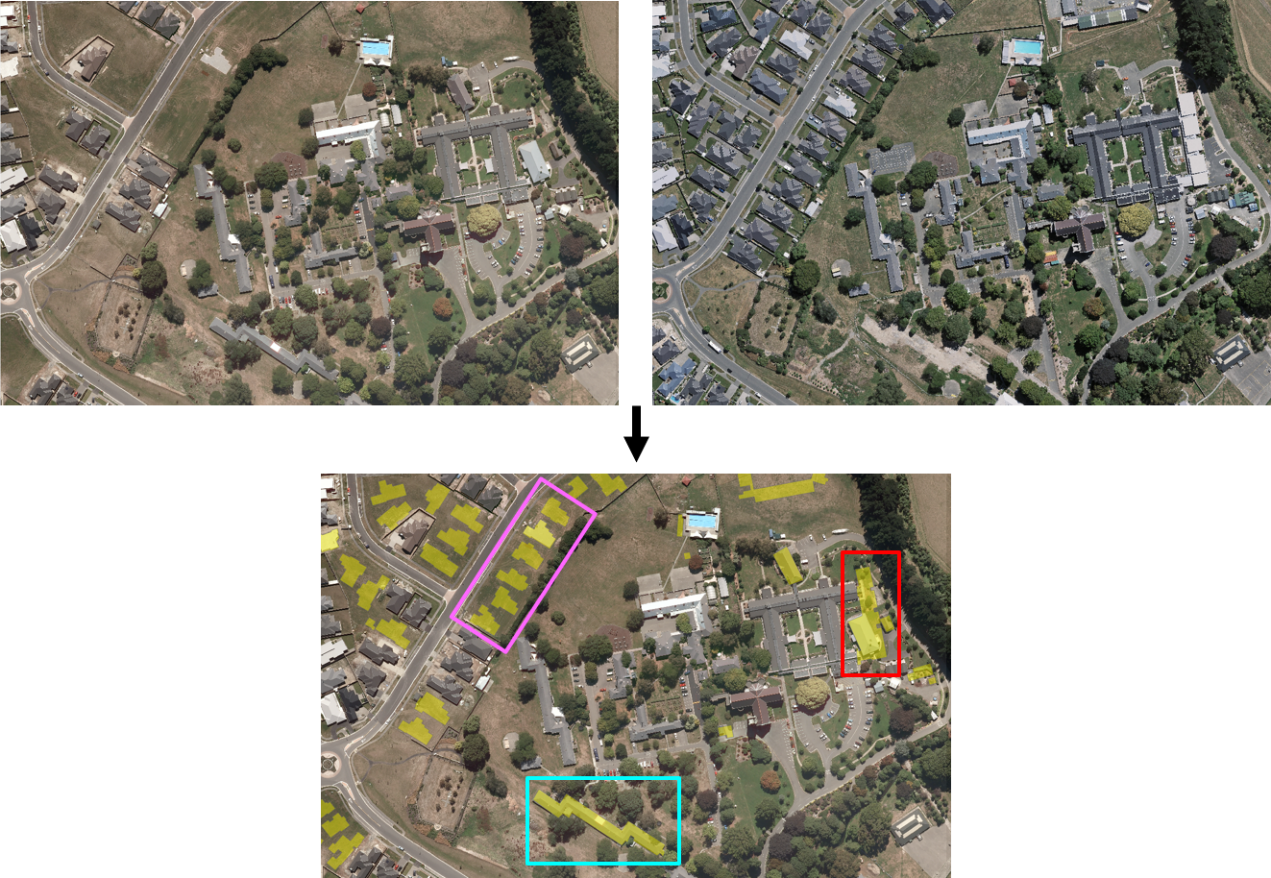Change detection involves comparing multi-temporal images of the same area (typically captured during different periods) to determine change types, magnitudes, and locations. It holds significant application value in land use monitoring, urban expansion analysis, geological disaster surveillance, ecological conservation, forest protection, and other natural resource management fields.
SuperMap iDesktopX provides the Detect Common Change function for various change detection scenarios. It identifies altered plots and generates vector results representing pixels of targeted change categories. This function performs fine-grained image interpretation, commonly used for detecting characteristic changes in buildings, roads, and water bodies.
Main Parameters
The following figure illustrates building detection results in a specific area. Sporadically added buildings (marked by pink boxes) are accurately identified with contours closely matching actual structures. The solution effectively extracts reshaped buildings (red box in Figure 8's upper left corner) and demolished buildings (blue box), producing clear and complete boundaries that meet practical requirements.

- Function Entry: Toolbox-> Machine Learning-> Imagery Analysis-> Detect Common Change tool.
- Source Data: Select the base image or raster dataset for change detection.
- Compare Data: Choose the comparison image or raster dataset for change detection.
- Model File: Specify the change detection model file (*.sdm).
- Tile overlap (pixel): Default 0. Recommended range: 1/8 to 1/4 of tile size to mitigate edge prediction issues. Larger overlaps increase overall inference time.
- Single Step Operation Amount: Number of images processed per inference batch. Default 1. Higher values increase memory/VRAM usage but reduce processing time within reasonable limits.
- Processor Type: Choose between central processing unit (CPU) or graphics processing unit (GPU). GPU delivers faster computation.
- GPU Number: Specify GPU device ID for processing. Default 0. Supports multi-GPU inference.
- Other Parameter Settings: Enable to configure bounds parameters.
- Bounds Dataset/Datasource: Enables custom bounds inference using vector dataset boundaries.
- Result Data: Configure output vector dataset parameters, including datasource and dataset name.
- Run: Click Run to execute detection. The Python window displays real-time progress information.
Related Content
 Machine Learning Environment Configuration
Machine Learning Environment Configuration



